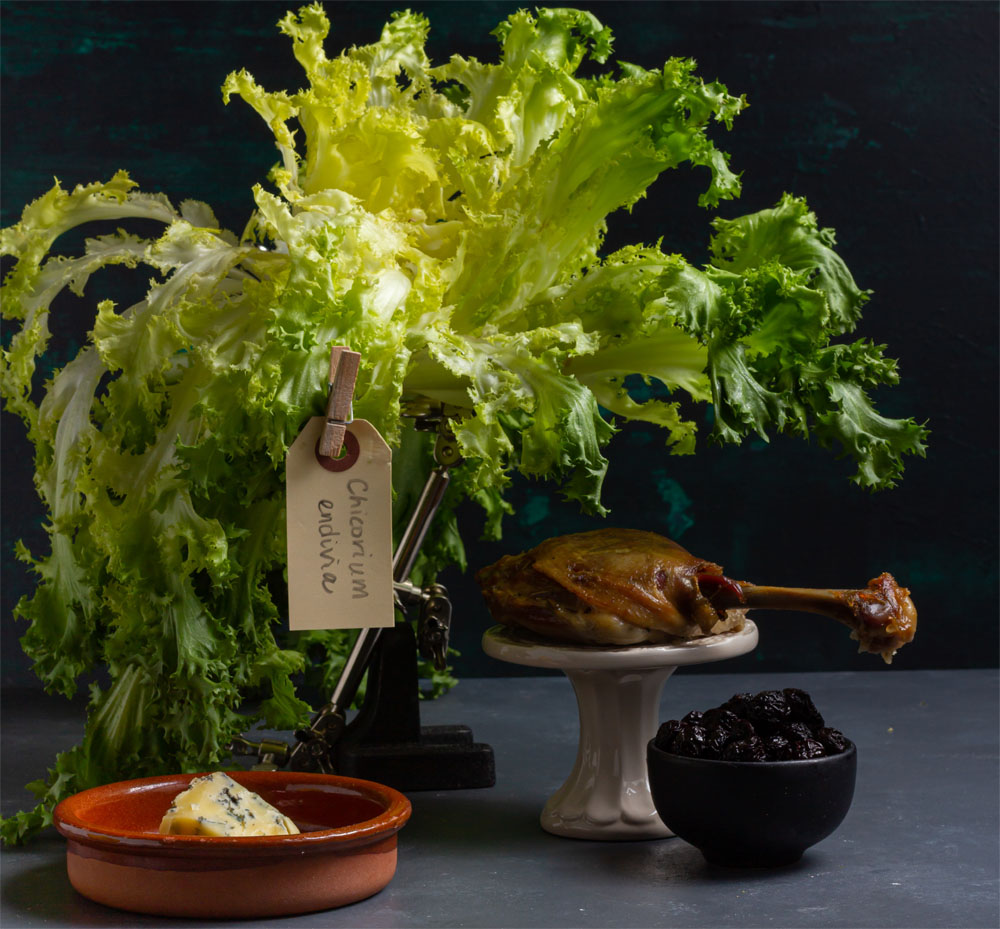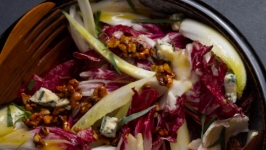Bitter Truths
If you think bitter greens are hard to swallow, persist. It’s just a question of acquiring the taste. After all, great numbers of people have grown to like (love) dark coffee, hoppy beers, and chocolate with upwards of 80 per cent cocoa.
We love those things because of—not despite—their bitter notes. That flavour is part of the overall package, just as life itself is a bittersweet symphony. Or so the song goes anyway. Most chefs and skilled home cooks will tell you that their favourite dishes incorporate sweet, tart, salty, and bitter in varying, but deliberate, proportions. Moreover, the clean, cooling taste of something bitter stimulates your appetite, leaving you well positioned to enjoy the next course.
Farmers around BC’s Lower Mainland are planting more of the chicory family, whose leafy members include bitter radicchio, frisée, endives, and dandelion. To survive economically, most farmers look for ways to extend their growing season. The traditional winter vegetables have been the cold-hardy brassica family, whose members are legion. Unfortunately, that family is prone to pests and disease, so strategic farmers prefer not to put all of their eggs in the brassica basket. The chicory family is therefore getting more space at winter markets. By no coincidence, it is also receiving more attention from gastronomes. In fact, back in 2017, Bon Appétit proclaimed chicory “vegetable of the year.” Poor kale, after enjoying quite a long run as Leafy Darling of the Western World, joined the ranks of the has-beens.
Local restaurant chefs are now embracing what Italian nonas have known forever: generous salt, fat, and acid tame the wildness of radicchio’s flavours. Bitter greens—which can also be red, or so pale a yellow they are almost white—don’t just stand up to assertive seasoning; they ask bacon and blue cheese to dance. They propose to anchovies and smoked salmon.








